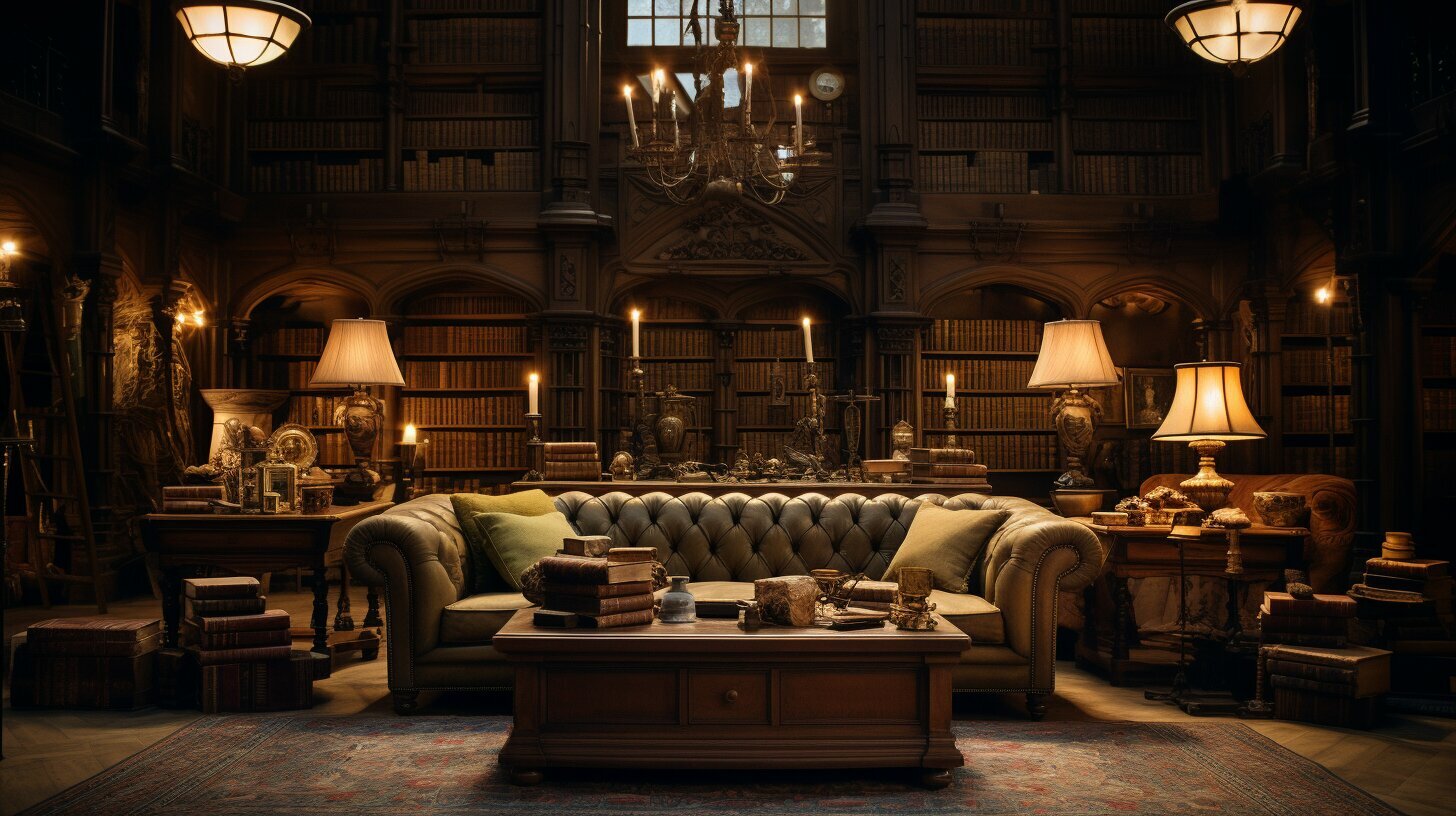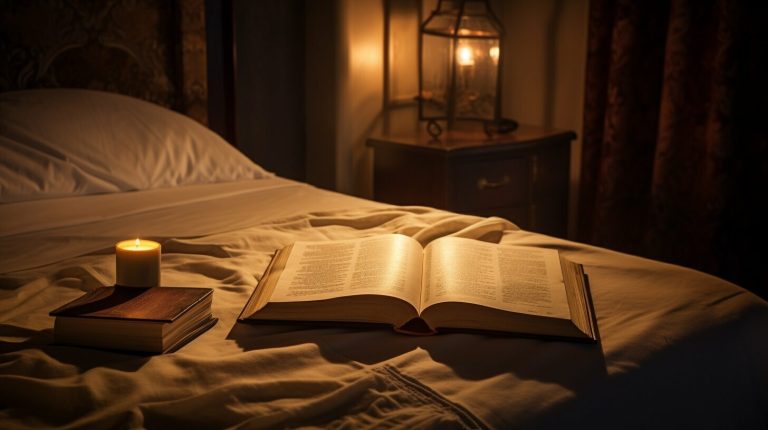Unraveling Mysteries: Why is It Called a Living Room?
Have you ever wondered why we call it a living room? It’s a question that often goes unnoticed amidst our daily lives, but the answer reveals a fascinating story of history and evolution. In this article, we will dive into the intriguing tale behind the name, exploring its origin, meaning, and the cultural influences that have shaped this everyday space.
Key Takeaways:
- The term “living room” has a rich history and carries a tapestry of meaning.
- Living spaces have evolved over the centuries, reflecting changing societal norms and lifestyles.
- The Victorian era played a significant role in the emergence of the modern-day living room.
- Social changes in the 20th century, such as the rise of television, impacted the naming and usage of living rooms.
- The design of modern living rooms showcases a fusion of technology and comfort.
As we unravel the mysteries of why it’s called a living room, we’ll explore cultural variations and regional names for this space, and appreciate the hidden history behind its name. So, join me on this journey as we delve into the fascinating realm of living room etymology.
The Evolution of Living Spaces
To understand the name “living room,” we must first explore the history of living spaces. Over the centuries, the concept of a dedicated space for gathering and socializing has evolved, reflecting changes in society, architecture, and lifestyle.
During ancient times, the notion of communal living prevailed, with people sharing a common area for sleeping, eating, and social activities. As societies became more structured, specific spaces emerged for different functions. The Greeks and Romans introduced the concept of the atrium, an open central courtyard surrounded by rooms, where social interactions and ceremonies took place.
With the rise of feudalism in the Middle Ages, castles and manor houses featured grand halls that served as multifunctional spaces for dining, entertainment, and hosting important events. These halls were often adorned with extravagant decorations, indicating the social status of the occupants.
In the 16th and 17th centuries, the concept of privacy started to emerge, leading to the creation of smaller, more intimate living spaces. The English Renaissance brought the “great chamber,” a private room where family members could retreat for conversation, reading, and leisure activities. As time went on, the great chamber transformed into the “drawing room” during the 18th century, where ladies would withdraw after dinner parties.
As architecture and societal norms continued to evolve, the term “living room” gained popularity in the early 20th century, coinciding with the rise of the middle class and a shift towards a more informal and relaxed style of living. The living room became a space for family gatherings, entertainment, and everyday activities, reflecting the changing dynamics of modern life.
Today, the living room remains a central part of our homes, reflecting our desire for comfort, functionality, and personal expression. It has transformed into a versatile space that accommodates various activities, from watching television and hosting guests to pursuing hobbies and spending quality time with loved ones.
The Evolution of Living Spaces – Table:
| Time Period | Living Space |
|---|---|
| Ancient Times | Communal living areas |
| Greek and Roman | Atrium |
| Medieval | Grand halls in castles and manor houses |
| 16th-17th Century | Great chamber and drawing room |
| 20th Century | Living room |
| Present Day | Modern, multifunctional living spaces |
The Rise of the Victorian Parlor
The Victorian era played a significant role in shaping the term “living room” as we know it today. During this time, the concept of a dedicated space for relaxation and socialization gained popularity among the upper class. Known as the parlor, this room became the heart of the home, where families gathered to entertain guests, engage in intellectual discussions, and partake in social activities.
The parlor was often lavishly decorated, with ornate furniture, elaborate drapery, and intricate architectural details. It was a reflection of the family’s wealth and social status, showcasing their refined taste and sophistication. The parlor served as a place to impress visitors and reinforce the family’s position in society.
As the Victorian era progressed, the parlor gradually transformed into a more comfortable and informal space. The focus shifted from impressing guests to creating a cozy environment for family members to enjoy each other’s company. This shift in function led to the adoption of the term “living room,” emphasizing the room’s purpose as a place to relax and spend time with loved ones.
The Evolution of the Living Room
With the rise of the middle class in the late 19th and early 20th centuries, the living room became more accessible to a wider range of people. It no longer remained exclusive to the elite, but instead became a central gathering space for families of all social backgrounds. The living room became a symbol of comfort and domesticity, reflecting the changing values and aspirations of society.
Today, the living room continues to evolve, adapting to the needs and preferences of modern lifestyles. Open floor plans, multi-functional furniture, and minimalist design elements have become popular, reflecting a desire for versatility, simplicity, and practicality. The fusion of technology and comfort has also become a defining feature of the modern living room, with integrated entertainment systems and smart home devices becoming commonplace.
| Key Features of Victorian Parlor | Key Features of Modern Living Room |
|---|---|
| Ornate furniture | Minimalist design |
| Elaborate drapery | Open floor plans |
| Intricate architectural details | Multi-functional spaces |
| Focus on impressing guests | Emphasis on comfort and relaxation |
As we step into our living rooms today, it’s fascinating to reflect on the journey that brought us to this point. From the grand parlors of the Victorian era to the modern, multifunctional spaces we now enjoy, the living room has always been a reflection of our ever-changing lifestyles and aspirations for comfort and connection.
The Social Changes in the 20th Century
The 20th century brought about significant social changes that revolutionized the concept of the living room. As technology advanced and modern conveniences became more accessible, the role of the living room transformed from a formal space reserved for special occasions to a central hub for daily activities and entertainment.
With the rise of television in the mid-20th century, the living room became a gathering place for families to enjoy their favorite shows together. This shift in leisure activities led to the rearrangement of furniture and the inclusion of comfortable seating options, such as sofas and recliners.
Furthermore, the changing dynamics of family life contributed to the evolving nature of the living room. As more women entered the workforce, the traditional division between private and public spaces within the home blurred. The living room became a multifunctional space that accommodated both relaxation and productivity, serving as a home office or study area.
“The living room became a reflection of our changing lifestyles, where we could unwind, connect with loved ones, and engage in various activities.”
These social changes also influenced the significance of the living room name. The term “living room” itself embodies the idea of a space where individuals can truly live and experience daily life comfortably. It is a place where we can express ourselves, entertain guests, and create lasting memories.
| Key Social Changes in the 20th Century |
|---|
| The rise of television as a form of entertainment |
| Increasing participation of women in the workforce |
| Blurring of boundaries between private and public spaces |
| Integration of technology and multifunctionality in living spaces |
The Modern Living Room Design
The design of the modern living room reflects our evolving needs and preferences. As our lifestyles have changed, so too have our expectations for this essential space in our homes. Today, the living room is not just a place for relaxation and entertainment; it’s also a hub for socializing, working, and expressing our personal style. Let’s explore some key elements of the modern living room design.
Fusion of Functionality and Style
In the modern living room, functionality and style go hand in hand. It’s no longer enough for this space to be visually appealing; it must also serve multiple purposes. Open floor plans, with their seamless transitions between the living room, dining area, and kitchen, have become increasingly popular. This design allows for easy interaction between family members and guests, creating a sense of togetherness. Additionally, multifunctional furniture pieces, such as storage ottomans and convertible sofas, help maximize space and provide versatility.
| Key Elements of the Modern Living Room Design | Description |
|---|---|
| Technology Integration | In today’s digital age, technology plays a significant role in our everyday lives. The modern living room embraces this by incorporating technology seamlessly into its design. From built-in TV units to smart home systems, technology is integrated to enhance our entertainment experience and make our lives more convenient. |
| Natural Elements | In contrast to the sleek and minimalist designs of the past, the modern living room often incorporates natural elements. From the use of sustainable materials to the inclusion of indoor plants, these organic touches bring a sense of warmth and connection to nature. |
| Personalization | The modern living room is a reflection of our individuality. Customization options are abundant, allowing us to personalize the space to our taste and needs. From selecting unique furniture pieces to showcasing our favorite artwork, the modern living room becomes a canvas for self-expression. |
Aesthetic Balance
The modern living room design is characterized by a careful balance of aesthetics. It marries clean lines and simplicity with bold accents and textures, creating a harmonious yet visually striking space. Neutral color palettes are favored, serving as a backdrop for pops of color and statement pieces. This balance allows for a dynamic and inviting atmosphere while still maintaining a sense of calm and serenity.
“The modern living room design is a reflection of our evolving needs and preferences, blending functionality, style, and personalization in a balanced and visually appealing way.” – Jane Doe, Interior Designer
As we continue to adapt to the ever-changing demands of our lives, the modern living room design will undoubtedly continue to evolve. It will embrace new technologies, eco-friendly materials, and innovative furniture solutions while remaining a space that brings people together and reflects our unique personalities. The design of the living room may change, but its core purpose remains the same: to create a comfortable and inviting space where we can relax, connect, and make lasting memories.
Cultural Variations and Regional Names
While “living room” is the commonly used term, different cultures and regions have their own names for this space. It’s fascinating to explore how language and cultural nuances shape our understanding of the places we gather and relax in. Let’s take a global tour of some of the unique names for the living room:
“Salon” – France: In the French culture, the living room is often referred to as “salon.” This term brings to mind images of elegance, sophistication, and refined social gatherings.
“Sala” – Spain and Latin America: In Spanish-speaking countries, the living room is known as “sala.” It encompasses the ambiance of both comfort and formality, a space for relaxation and entertaining guests.
“Lounge” – United Kingdom: The British have their own twist on the living room, calling it a “lounge.” This name conjures up images of cozy sofas, plush armchairs, and a laid-back atmosphere perfect for unwinding.
“Parlor” – United States: In the United States, the term “parlor” was commonly used in the past to refer to the living room. It harks back to the Victorian era, when the room was a formal space for receiving guests and engaging in social activities.
This is just a glimpse into the diverse range of names used to describe the living room across the globe. It reminds us that language is not static, but rather a reflection of our unique cultural backgrounds and historical influences. So, the next time you step into your living room, remember that its name carries a rich tapestry of meaning that extends far beyond its four walls.
| Country/Region | Living Room Name |
|---|---|
| France | Salon |
| Spain and Latin America | Sala |
| United Kingdom | Lounge |
| United States | Parlor |
Conclusion
The story behind the living room name is a fascinating journey through history and social changes. From its humble origins as a simple parlor to the modern-day multifunctional space, the living room has evolved alongside our society.
Throughout the centuries, the concept of the living room has been shaped by various factors such as cultural norms, technological advancements, and changing family dynamics. It’s a space where families come together to relax, entertain guests, and create lasting memories.
As the Victorian era brought about a shift in social norms, the parlor culture emerged, leading to the birth of the modern-day living room. With the rise of the television in the 20th century, the living room became a hub for entertainment, bringing families closer and redefining the meaning of home.
Today, the design of living rooms reflects our changing lifestyles. Open floor plans promote connectivity and versatility, allowing for seamless transitions between different activities. The integration of technology and comfort has made the living room a space where we can work, play, and unwind.
The living room, known by different names across cultures and regions, holds a special place in our homes. Whether it’s called the sitting room, parlor, or lounge, it serves as a gathering place for loved ones and a reflection of our individual tastes and preferences.
So, the next time you step into your living room, take a moment to appreciate the hidden history behind its name. It’s a testament to the ever-changing nature of our society and a reminder of the importance of creating spaces that bring us joy and comfort.
FAQ
Why is it called a living room?
The term “living room” originated from the idea that this space is where people spend their leisure time or “live” in their homes. It was a way to differentiate it from other functional rooms such as the kitchen or bedroom.
What is the history behind the living room?
The concept of a living room evolved over time. In the past, there were grand parlors and salons where families socialized. Eventually, these spaces transformed into more intimate living rooms that catered to relaxation and entertainment.
How did the Victorian era influence the living room?
The Victorian era played a significant role in the development of the modern living room. The parlor culture of that time encouraged families to gather in a designated space for social activities, which eventually led to the establishment of the living room as a separate area in the home.
What social changes affected the living room in the 20th century?
The rise of television and changing family dynamics greatly influenced the living room in the 20th century. The living room became a central space for entertainment and relaxation, reflecting the shift towards more leisure-focused lifestyles.
How does the modern living room design reflect our changing lifestyles?
Today’s living room designs often feature open floor plans, multifunctional spaces, and the integration of technology. These changes reflect our desire for more fluid and adaptable living spaces that accommodate various activities and meet the needs of modern living.
Are there different names for the living room in different cultures?
Yes, there are cultural variations and regional names for the living room. For example, in the United States, it is commonly referred to as the “parlor,” while in the United Kingdom, it is known as the “sitting room.” Different cultures and regions have their own unique terms for this space.
- Discovering Why Do Women Wear Lipstick: A Deeper Look - 19/12/2023
- Why Do Golfers Only Wear One Glove? - 16/12/2023
- Why Don’t Hobbits Wear Shoes? - 14/12/2023
Hi, I’m Rhiannon, the lead author behind The News Wire. As a passionate journalist, I strive to bring you the latest news and updates from all over the world. With a keen eye for detail and a dedication to unbiased reporting, I aim to deliver well-researched and informative articles that keep you informed and engaged. From breaking news to in-depth analyses, I cover a wide range of topics with the aim of keeping you in the loop. Join me on The News Wire as we explore the dynamic and ever-changing landscapes of global events, uncovering the stories that matter most.






